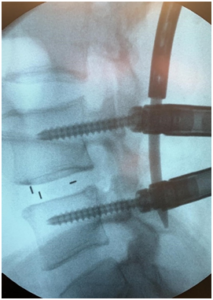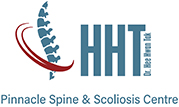The objectives of minimally invasive or keyhole spine surgery are similar to traditional open spine surgeries. They are to stabilize the spinal segments and reduce compression on the spinal nerves. The pathologies causing nerve compression include spinal instability, bone spurs, and prolapsed discs.
As compared to open spine surgery, minimally invasive spine surgery is associated with lower complications and faster recovery time. There is less damage to the surrounding muscles and soft tissues when one does minimally invasive spine surgery.
The advantages are:
Various spinal conditions can be managed via minimally invasive or keyhole spine surgery. They include:
Minimally Invasive Spine Surgery Procedure
A commonly used keyhole spine surgery technique is the use of a tubular retractor. This technique involves progressive dilation of the soft tissues (Figure 2), as opposed to cutting directly through the muscles.
By using tubes to keep the muscles out of the way, surgery can be performed through the incision without having to make a long incision. In our practice, we will also combine a tubular retractor with a microscope focused down the tube to assist with performing the surgery. The microscope provides illumination and magnification so that the surgery can be performed effectively and safely.

Figure 2
Sometime, keyhole spine surgery may involve placing rods and screws to stabilize the spine (Figure 3).
This usually involves inserting rods and screws through small skin incisions without cutting or dissecting the underlying muscles.

Figure 3
The three most commonly performed spinal operations using minimally invasive or keyhole spine surgery are:

Figure 4
Not every patient is suitable for minimally invasive surgery. During the counselling process in the clinic prior to surgery, the doctor will discuss with the patient the pros and cons of such a procedure based on his/her condition. In some cases, there may be a small chance whereby keyhole spine surgery cannot be completed, thus requiring conversion to an open surgery.
As with any surgery, there are potential risks associated with minimally invasive spine surgery: anaesthesia risks, deep vein thrombosis, lung infection, wound infection, and nerve injuries. The doctor will explain the associated risks with the patient prior to surgery.

